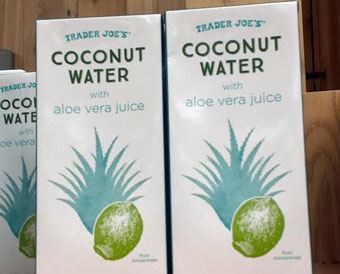Samoan
- 260
- 43
(Found this thread on Aloe Vera) -GOOD INFO
A few properties of Aloe Vera
Amino Acid
Aloe Vera contains the following Amino Acids: Isoleucine, Leucine, Lysine, Methionine, Phenylalanine, Threonine, Valine, And Tryptophan, Alanine, Arginine, Asparagine, Cysteine, Glutamic Acid, Glycine, Histidine, Proline, Serine, Tyrosine, Glutamine, And Aspartic Acid.
Enzymes
Those include the following: Amylase, Bradykinase, Catalase, Cellulase, Lipase, Oxidase, Alkaline Phosphatase, Proteolytiase, Creatine Phosphokinase and Carboxypeptidase.
Micro & Micro Nutrients
These include Vitamins A, C, E and B2, B3, B5, B6 and B12 in addition to Choline, Calcium, Magnesium, Zinc, Magnanese, Chromium, Selenium, Copper, Iorn, Potassium, Phosphorus and Sodium.
Lingnins & Polysaccharides
They include: Galactose, Xylose, Arabinose, Acetylated Mannose And Acemannan.
And of course there's the Salicylic acid compound and its associated benefits as far as root development. Adding 1/4 cup of Aloe Vera juice/extract/whatever term you want to use to 1 gallon of water and use that to wet your rooting medium - even Grodan Rockwool cubes - will give you root size and development that is nothing short of amazing. Or at least in my experience.
HTH
CC
A few properties of Aloe Vera
Amino Acid
Aloe Vera contains the following Amino Acids: Isoleucine, Leucine, Lysine, Methionine, Phenylalanine, Threonine, Valine, And Tryptophan, Alanine, Arginine, Asparagine, Cysteine, Glutamic Acid, Glycine, Histidine, Proline, Serine, Tyrosine, Glutamine, And Aspartic Acid.
Enzymes
Those include the following: Amylase, Bradykinase, Catalase, Cellulase, Lipase, Oxidase, Alkaline Phosphatase, Proteolytiase, Creatine Phosphokinase and Carboxypeptidase.
Micro & Micro Nutrients
These include Vitamins A, C, E and B2, B3, B5, B6 and B12 in addition to Choline, Calcium, Magnesium, Zinc, Magnanese, Chromium, Selenium, Copper, Iorn, Potassium, Phosphorus and Sodium.
Lingnins & Polysaccharides
They include: Galactose, Xylose, Arabinose, Acetylated Mannose And Acemannan.
And of course there's the Salicylic acid compound and its associated benefits as far as root development. Adding 1/4 cup of Aloe Vera juice/extract/whatever term you want to use to 1 gallon of water and use that to wet your rooting medium - even Grodan Rockwool cubes - will give you root size and development that is nothing short of amazing. Or at least in my experience.
HTH
CC






